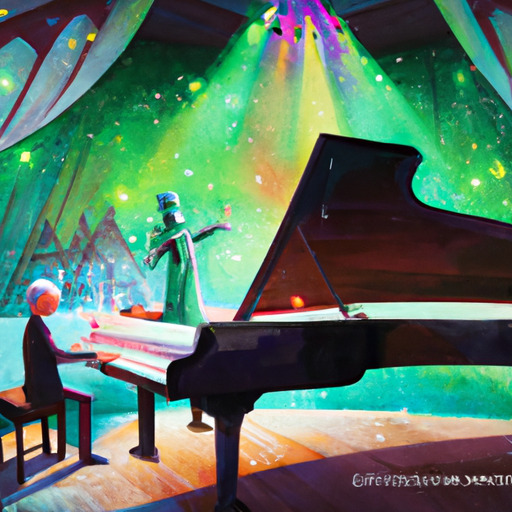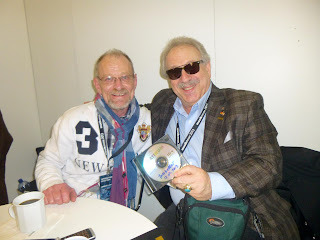#cminor
Explore tagged Tumblr posts
Text

https://ift.tt/rTKgjsy when some fall short Broder T
#felt piano#field recordings#sound fx#80 BPM#SoundCloud#piano#swells#Cminor#Emotional#melancoly#noir#December 17#2024 at 03:17AM
0 notes
Text
Wolfgang Amadeus Mozart Quintet In C Minor For Strings K.406 (1951)

Publication date 1951
Budapest String Quartet
Milton Katims, viola
The Quintet in C Minor for Strings K.406, composed by the genius Wolfgang Amadeus Mozart, stands as a testament to his remarkable talent and mastery of classical music. This quintet, written for two violins, two violas, and cello, showcases Mozart's ability to evoke profound emotions through his intricate composition.
Mozart composed the Quintet in C Minor for Strings K.406 in 1787, during a period of great creativity and productivity in his life. This piece was written during his time in Vienna, where he was well-established as a gifted composer and performer. The composition of this quintet coincided with the premiere of his opera "Don Giovanni," which demonstrates the breadth of Mozart's artistic output during this productive period.
The quintet follows the traditional four-movement structure commonly found in classical chamber music. The first movement, marked Allegro, introduces the main thematic material, skillfully weaving together contrasting melodies and harmonies. This movement showcases Mozart's ability to create tension and drama through dynamic shifts and intricate counterpoint.
The second movement, marked Andante, offers a contrasting mood of introspection and lyrical beauty. Here, Mozart's gift for melodic invention shines through, as the strings engage in a delicate and heartfelt dialogue. The movement unfolds with elegance and grace, captivating listeners with its emotional depth.
The third movement, marked Menuetto, is a delightful and lively dance-like movement. Mozart infuses this movement with his signature charm and wit, showcasing his ability to create music that is both sophisticated and accessible. The interplay between the instruments creates a sense of joyful conversation, with moments of playful syncopation and rhythmic drive.
The final movement, marked Allegro, brings the quintet to a thrilling and exhilarating conclusion. Mozart's masterful use of counterpoint and virtuosic passages creates a sense of urgency and excitement. The movement showcases the technical prowess of the musicians as they navigate through intricate passages, building towards a powerful and climactic finale.
The Quintet in C Minor for Strings K.406 is a masterwork that explores a wide range of emotions and musical techniques. Mozart's use of chromaticism, unexpected harmonic progressions, and expressive melodies creates a rich tapestry of musical colors and textures. The interplay between the instruments highlights the unique qualities of each, allowing the individual voices to blend and soar together in harmonious unity.
Wolfgang Amadeus Mozart's Quintet in C Minor for Strings K.406 stands as a testament to his genius and enduring legacy. Through its four movements, this quintet takes listeners on a journey of emotional depth and musical brilliance. The interplay between the instruments, the intricate composition, and the profound beauty of Mozart's melodies all contribute to the enduring appeal of this masterpiece. The Quintet in C Minor for Strings K.406 remains a testament to Mozart's unparalleled ability to touch the hearts and souls of listeners, even centuries after its composition.
#Mozart#ClassicalMusic#MusicComposition#Quintet#CMinor#StringInstruments#ChamberMusic#MusicHistory#ClassicalEra#Composers
0 notes
Text
Dean Ween guitar lesson: Ice Castles
Uploaded to Deaner's Youtube in 2015 (as two separate videos). From the first video's description:
A very fun song to play---this is how the rhythm guitar goes--I may post the melody in a different video--it breaks down like this though basically: E flat--F minor-G7-Cminor-Bflat E flat-G7-C major-B flat the ending G sharp- F---resolves on C major.
#as someone pointed out in the comments: “i can't play both at once” *plays both at once*#you probably need his ET fingers to do that though#i prolly shouldn't call arachnodactyly “ET fingers” huh#though it does literally mean “spider fingers” which isn't that much better#ween#white pepper 25#dean ween#i am too tired to be trusted with tags
8 notes
·
View notes
Video
tumblr
jsb0549.mid "Prelude&Fugue Cminor BWV549" Nov 1996 Archived Media File 📀 🔊
2 notes
·
View notes
Text
MIDI composition - bluesy house in Cminor, 120bpm.
#highfidelity#hiphop#newjersey#explorepage#artistsoninstagram#jerseyartists#musician#bassmusic#housemusic#nyc
4 notes
·
View notes
Text
daily violin affirmation: I can be normal about cminor in third position, I do not hold any deep grudges toward the fourth finger in cminor third position, I never forget to play the f in cminor third position
11 notes
·
View notes
Text
Guitar Scales: A Complete Guide for Beginners (With Theory, Tips & Practice Routines)

Whether you're a beginner guitarist or someone looking to build a strong foundation, understanding guitar scales is essential for mastering melody, improvisation, and soloing. In this humanised, SEO-optimised and AdSense-friendly guide, we’ll explore what guitar scales are, how to learn and practice them, their different types, and how they can truly transform your playing journey.
🎸 What Are Guitar Scales?
A guitar scale is a sequence of musical notes played in ascending or descending order. Think of scales as musical DNA – they form the structure behind chords, melodies, and solos. Scales follow patterns of intervals (whole and half steps) and provide the roadmap to play in key. Understanding them gives you the freedom to improvise and write music across any genre – be it Bollywood, classical, or rock. Whether you’re strumming your first chords or composing instrumentals, scales will shape your understanding of guitar.
🧠 Why Should Beginners Learn Scales?
Here’s why every beginner should include scales in their practice: - ✅ Improves finger strength & coordination - ✅ Builds speed and accuracy - ✅ Trains your ears (ear training) - ✅ Unlocks melody and soloing freedom - ✅ Enhances music theory understanding Learning scales is like learning a new language – it may seem technical at first but opens creative freedom. "When I started out, I didn’t understand why scales mattered. But once I started composing melodies, I realised scales were the key to everything musical."
🎯 10 Must-Know Guitar Scales for Beginners
Understanding different types of scales gives you more creative tools. Let’s break them down: 1. Major Scale - Bright, happy and natural sound - Formula: W-W-H-W-W-W-H - Example: C Major = C - D - E - F - G - A - B - C - Common in: Pop, Bollywood, Indian Raag Bhupali 2. Natural Minor Scale - Emotional, intense or sad feel - Formula: W-H-W-W-H-W-W - Example: A Minor = A - B - C - D - E - F - G - A - Common in: Bollywood ballads, Indian Raagas like Bhairavi 3. Harmonic Minor Scale - Exotic and classical sound - Formula: W-H-W-W-H-W+H-H - Example: A Harmonic Minor = A - B - C - D - E - F - G# - A 4. Melodic Minor Scale - Complex, used in jazz & Indian classical - Ascending: W-H-W-W-W-W-H - Descending: Natural Minor 5. Pentatonic Major Scale - Simple 5-note scale - C Major Pentatonic: C - D - E - G - A - Great for melodies and riffs 6. Pentatonic Minor Scale - Most used in guitar solos - A Minor Pentatonic: A - C - D - E - G 7. Blues Scale - Adds a flat fifth or "blue note" - A Blues Scale: A - C - D - D# - E - G - Perfect for soulful solos 8. Dorian Mode - Minor mode with a twist - Often used in film scores and classical fusion 9. Phrygian Mode - Dark, Spanish/Flamenco sound - Common in Bollywood thrillers and suspense 10. Lydian Mode - Dreamy and open - Same as Raag Yaman in Indian classical
🗺️ How to Learn and Practice Scales (Step-by-Step)
- Start with One Position – Focus on 5th or 8th fret shapes - Use a Metronome – Begin slow (40-60 BPM) then increase - Use Alternate Picking – Down-Up for every note - Train Both Directions – Ascending & descending - Practice with Backing Tracks – Helps apply scales musically - Jam with Each Scale – Compose a lick or riff after each session 🔁 Tip: Stick to one scale per week and apply it across different keys.
🧪 Theory Behind the Scales
Each scale is built from intervals. Here’s a quick table: Scale TypePattern (W=Whole, H=Half)Notes (in C)Major ScaleW-W-H-W-W-W-HC D E F G A B CMinor ScaleW-H-W-W-H-W-WA B C D E F G ABlues ScaleW+H-W-H-H-W+H-WC D# F F# G A# CPentatonic MinorW+H-W-W-W+H-WA C D E G AHarmonic MinorW-H-W-W-H-W+H-HA B C D E F G# A
🎵 Scales in Bollywood & Indian Classical
You’ll be surprised how much Bollywood relies on these scales: SongScale/Raag EquivalentTum Hi HoA Minor / Raag BhairaviKal Ho Na Ho (Title Track)C Major / Raag BhupaliKabiraA Minor PentatonicAgar Tum Saath HoD Harmonic MinorRaga Yaman (instrumentals)Lydian Understanding these relationships helps you play Indian songs with emotion and depth.
🛠️ Practice Routine (15 Minutes a Day)
Here's a beginner routine to follow: - 5 min – One scale slow tempo (e.g., A Minor) - 3 min – Ascend and descend with alternate picking - 4 min – Improvise short melody - 3 min – Apply scale over backing track or chords You can expand to 30 or 45 minutes once comfortable.
🧑🎓 Author’s Note: My Journey with Scales
When I began playing, scales felt mechanical. I didn’t realise their real value until I joined a band. While jamming, I often fumbled when soloing. That’s when I took scales seriously. Now, scales are my creative playground. I improvise on Raag Yaman, compose over minor pentatonic shapes, and use blues scale for rock vibes. Trust me, scales make your guitar journey exciting and musical.
🔗 Recommended Posts from StrumMuse
A Major Scale
B Major Scale
C Major Scale
D Major Scale
E Major Scale
F Major Scale
G Major Scale
A Minor Scale
B Minor Scale
C Minor Scale
D Minor Scale
E Minor Scale
F Minor Scale
G Minor Scale
🧩 Conclusion
Scales might feel theoretical at first, but they’re actually the foundation of all music on guitar. Whether you want to solo over your favourite Bollywood song or jam with friends, mastering scales gives you musical confidence. Keep exploring, keep playing, and trust the process. 🎸 Read the full article
0 notes
Text
Principle Study Class Journal (Semester 1)
Week 2: Max Reger Modulation
As part of the advanced modulation review, we were introduced to “Back to Basic Modulation” by Max Regar. This kind of modulation is in a way a Good boy kind because it is quite strict in what can and cannot be used. NO ENHARMONICS? This method shows us how to do the modulation properly which is an interesting thing to know. They would use relationships between keys to create the perfect modulation, which shows us different approaching methods.
Back to Basic Modulation (Max Regar):
Cadential Modulations:
IV - V - I
II - V - I
bII - Ic - V - I
Relationships Between Keys (Max Regar):
Pivot Chords
Borrowed Chords; Borrowing from its neighbouring chords for example CMajor scale borrowing Emajor chord from Cminor to make a smoother transition
Ex: Parallel Natural Minor: iv - v - VI - VII
Neopolitan 6th Chords; Using bII or II as part of modulating
Dorian 6th Chords
2nd Super-Dominant
To understand it better, we were given some exercises to do using Max Reger Modulation:
AMaj to Abmin; which could easily be obtained using the Neapolitan method

GbMaj - B minor; which has 2 possible direction

0 notes
Video
youtube
One of my favourite Ciaconna’s from the Baroque era: Buxtehude’s offering in C Minor, with a grandiose pedal part.
#buxtehude#dieterichbuxtehude#ciaconna#organ#cminor#lübeck#marienkirche#organist#composer#dietrichbuxtehude#janreincken
7 notes
·
View notes
Video
Few choruses from Blue Bossa 🎸 #bluesbossa #jazz #jazzmusic #choruses #jazzguitar #guitarofinstagram #instamusic #cminor #friday #standard https://www.instagram.com/p/B2WTrYBjgtL/?igshid=1d06ih55spn4w
1 note
·
View note
Text
2 notes
·
View notes
Audio
The third piece I will share is one I am incredibly surprised not to have shared already. Completed in November 2015, this is my second symphony, and surprisingly the last one I have completed. This is very similar in style to the last piece I shared, though they were composed two years apart, except the final movement, instead of being reminiscent of Mendelssohn and the early Romantics, almost reminds of Brahms 1 or Holst’s Jupiter. As a final moment of composer-like smartarsery, I included references to all 3 previous movements at the end of the fourth movement – as if anyone would hear them over one another. That’s the kind of things composers do, and you’ve got to hate us for it.
@you-had-me-at-e-flat-major
#richardblaquiere#richard#blaquiere#brahms#symphony#no2#cminor#c minor#november#2015#holst#composer#movements#allegromolto#adagio#allegro#composition#orchestra#viola#violin#cello#composing#contemporarymusic#contemporary composer#youngcomposer#artist#art#music#classicalmusic#classical music
49 notes
·
View notes
Text
Master Yoda composes Piano Concerto No. 2 in C minor, Op. 18 with Rachmaninoff
Master Yoda: Greetings, Rachmaninoff. I sense the struggle within you. May the Force guide us in your composition of Piano Concerto No. 2 in C minor, Op. 18. Rachmaninoff: Thank you, Master Yoda. I have been struggling with the development section of the first movement. I cannot seem to find the right chords. Master Yoda: Ah, the development section. A crucial component of a concerto. Remember,…

View On WordPress
#chords#circleoffifths#ClassicalMusic#Cminor#creativity#developmentsection#guidance#harmonization#JediKnight#MasterYoda#musiccomposition#Op18#pianoconcerto#Rachmaninoff#sonataform#StarWars#TheForce#thememelody#wisdom
1 note
·
View note
Text
Hammond Report November 16 2021 From Pandemic Quarantino Jon Hammond
#WATCHMOVIE HERE: Hammond Report November 16 2021 From Pandemic Quarantino Jon Hammond
Jon's archive https://archive.org/details/hammond-report-november-16-2021-from-pandemic-quarantino-jon-hammond
Youtube https://www.youtube.com/watch?v=_ML3reCkaso
FB https://fb.watch/9kcQH36QKt/
Hammond Report November 16 2021 From Pandemic Quarantino Jon Hammond
by
Jon Hammond




Hammond Report November 16 2021 From Pandemic Quarantino Jon Hammond - Daily Music and Stories from Jon Hammond the organ player & accordionist - today's music story about playing my tune Thing in C minor, the relative key of E flat major - 3 flats, and we play all 3 and then some! On the band at Jazzkeller: Giovanni Totò Gulino. Peter Klohmann. Joe Berger and yours truly Jon Hammond at the Hammond Sk1 organ. I cooked Broccolini, came out pretty good! We are hoping to be back in there 28th of April 2022 - have a beautiful Tuesday folks, I'll be back tomorrow - Jon Hammond - Jon Hammond Band
#HammondReport
#16November2021
#3FLATS
#Cminor
#Broccolini
#podcast
#jazzkeller
#frankfurt
#hammondorgan
#JonHammond
#byebyenow
Publication date
2021-11-16
Usage
Attribution 4.0 International


Topics
Hammond Report, 16 November 2021, podcast, broccolini, Hammond Organ, saxophone, Peter Klohmann, 3 flats, C minor, jazzkeller, frankfurt, Jon Hammond, bye bye now
Language
English
Addeddate
2021-11-17 01:52:00
Identifier
hammond-report-november-16-2021-from-pandemic-quarantino-jon-hammond






Hammond Report, 16 November 2021, podcast, broccolini, Hammond Organ, saxophone, Peter Klohmann, 3 flats, C minor, jazzkeller, frankfurt, Jon Hammond, bye bye now
Hammond Report, 16 November 2021, podcast, broccolini, Hammond Organ, saxophone, Peter Klohmann, 3 flats, C minor, jazzkeller, frankfurt, Jon Hammond, bye bye now
#hammondreport#16november2021#podcast#broccolini#hammondorgan#saxophone#peterklohmann#3flats#cminor#jazzkeller#frankfurt#jonhammond#byebyenow
0 notes
Video
youtube
[There's No Space Left in C# Minor] a short film directed by Margaret Zhang
3 notes
·
View notes
Photo

What u like acoustic guitar or electric guitar?? Comment here👇 . . ɢUɪTAʀ CʜOʀDS | C MINoR | BaR CʜOʀD ░g░u░i░t░a░r ░c░h░o░r░d░s . . Guitar🎸 chords C MINoR chord Bar chord 🎸 Here we start again with another tutorial in this chord series Simple and easy chord, it's the very intermediate chord that people play while learning guitar🎸. . . . stay connected stay learned 🎸 #guitar #chords #Cminor #music #love #Musicians #Bollywoodsongs #HindiSong #musician #musica #melody #toptags #play #instrument #guitars #guitarist #guitarpick #guitarplayer #guitare #guitar #music #guitaramp #guitarstrings #barchords (at Samvet Gurukul) https://www.instagram.com/p/CBXlOvljz--/?igshid=1e3x2w1n3wves
#guitar#chords#cminor#music#love#musicians#bollywoodsongs#hindisong#musician#musica#melody#toptags#play#instrument#guitars#guitarist#guitarpick#guitarplayer#guitare#guitaramp#guitarstrings#barchords
0 notes